Why the US is the top country for tourism in 2024

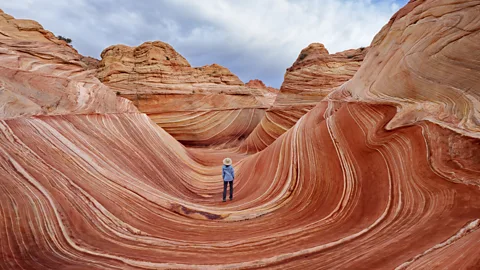 Getty Images
Getty ImagesA new report published by the World Economic Forum highlights the nation’s promotion of natural and cultural resources and commitment to sustainability and tourism.
Though it’s been a bumpy four years for the travel industry, international tourist arrivals are finally set to reach pre-pandemic levels in 2024. But continued global travel growth is far from a sure thing, thanks to inflation, climate change and geopolitical tensions, which keep the sector in a tenuous spot.
Yet, certain countries and governments have done a better job minimising those risks and maximising their travel and tourism potential, according to the Travel & Tourism Development Index 2024, which was published last month by the World Economic Forum. The index ranks countries around the world based on factors like safety and security, prioritisation of travel and tourism, air and ground travel infrastructure, natural and cultural resources and sustainability.
This year’s rankings saw Spain, Japan (last year’s winner), France and Australia ranked in the top five, and a newcomer at the top of the list: the United States, which outperformed the global competition with its scores for its business environment, air transport infrastructure and natural resources. The high scores are a reflection of the country’s robust infrastructure, ease of travel between cities, diverse natural and cultural destinations and traveller-friendly resources – such as guides to cities, parks and other attractions.
“While obvious reasons for this accolade exist, such as its diverse landscapes, natural beauty and cultural richness, the US also boasts a well-developed infrastructure supporting the travel and tourism sector,” says Anna Abelson, an adjunct instructor at New York University’s SPS Tisch Center of Hospitality.
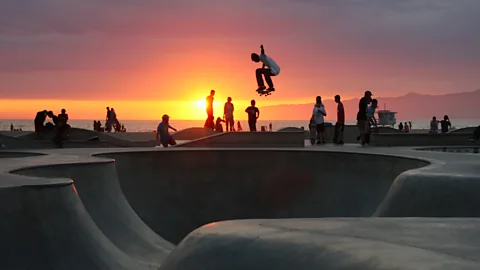 Alamy
AlamyThat infrastructure bolsters a lot of spending power. According to the United States Travel Association’s (USTA) biannual US travel forecast, prior to the pandemic, international visitors spent $180bn in the US in 2019, generating nearly $2 trillion in economic output. To put that in perspective, France – the world’s most-visited country, which received 90 million visitors in 2019 compared to 79.4 million in the US – saw roughly $61bn (€56bn) in revenue from international tourism that year. While that $180bn number dipped during the pandemic, the USTA notes that visitor levels are set to recover by 2025.
Compared to other countries, the US federal government provides broad support for travel and tourism, especially in maintaining and regulating the strong airport infrastructure and airline industry. Yet, experts say much of the country’s travel and tourism success can be traced back to the diversity of its cities – both big and small – and the time and financial investment they’ve each made in crafting long-term sustainable tourism plans.
Broad appeal
With bigger budgets and staff, the US’s largest cities have made strong pushes to stay on the minds and the maps of international travellers – and those big bets are paying off.
“For decades, major cities in the US like [Las] Vegas and New York have taken a proactive and aggressive approach to marketing their destinations with strong branding in a way that lasts and resonates with consumers,” said Taryn Scher, founder of TK Public Relations, that represents destinations like Greenville, South Carolina, and Macon, Georgia. “You know the taglines. There’s no question this leads to increased tourism in their respective cities.”
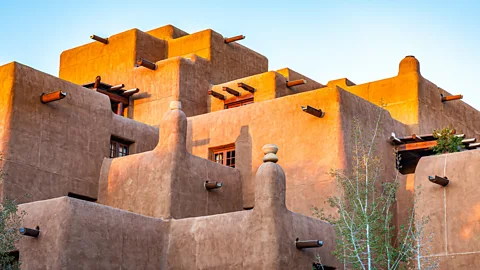 Getty Images
Getty ImagesThe US’s global mega events – think Coachella, the Super Bowl and Mardi Gras – also draw visitors from around the globe, says Scher. The vast US National Parks System, whose 63 parks and 54 million acres (which is nearly as large as the entire United Kingdom), can’t be overstated in terms of its global appeal.
“The USA is blessed with more variety of landscapes and interesting cities than any country on the planet, from mountains, desert, tropics, swamp,” said Tim Leffel, author of the book and online resources The World’s Cheapest Destinations. “New Orleans, New York City, Santa Fe, Alaska and Florida are more different than most countries are.”
Think global, act local
Big or small, the US travel industry doesn’t see tourism as a zero-sum game.
The top 10 countries for tourism
Source: World Economic Forum’s Travel & Tourism Development Index 2024
“One of the driving factors to the success of the travel industry in the United States is the collaborative efforts between the local, regional and state tourism organisations,” said Danielle Borja, President/CEO of Visit Conejo Valley.
For instance, Borja notes that Visit California recently launched The Ultimate Playground campaign to showcase its outdoor, cultural and wellness activities across the state. But it gave the opportunity for industry partners, like Visit Conejo Valley, to highlight more playful activities like a new Star Wars exhibit at the Ronald Reagan Presidential Library & Museum. Tourism entities like this often also partner with private businesses like restaurants and privately owned attractions, which serves as a positive aspect of the US tourism industry. According to the World Travel & Tourism Council, a clash between the governmental “enforcer” role and privately owned businesses can hinder collaboration and misalign priorities, but this problem is less pronounced in the US.
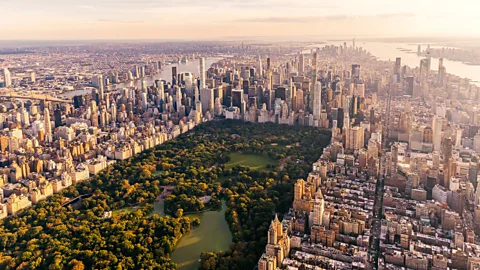 Getty Images
Getty ImagesScher also notes how the rise of US cities that have traditionally received fewer international tourists have seen their visitor numbers grow. “More recently, places like Tampa, Savannah, Cincinnati, Indianapolis [and] Louisville have found a way to craft their messaging to bring brand awareness and do so in an aggressive yet strategic fashion,” she said.
As a 20-year industry veteran, Scher believes that the US has been able to maintain its strong travel growth trajectory because each bureau in each state and city prioritises its marketing efforts.
“We’ve seen a huge rise in interest in these smaller and lesser-known destinations,” said Scher. “They became popular during the pandemic when people were looking for less-populated places to visit, and now the smart destinations who saw that rise realise there is real money in tourism.”
The investment doesn’t always happen overnight, but places like Charleston and Napa Valley have both benefited from a long-term strategy, and how it can impact a city’s entire economy. “More visitors means more spending in local restaurants, shops and hotels,” said Scher. “Every $1 visitors spend locally is multiplied and stays in the community, therefore leading to a dramatic direct economic impact. Tourism booms lead to more jobs and opportunities in communities.”
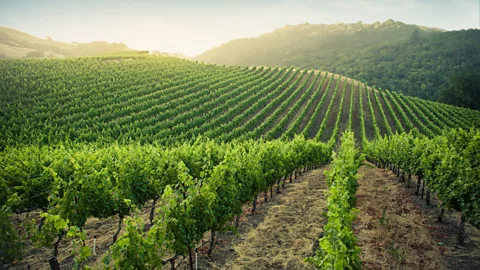 Getty Images
Getty ImagesDriven by data
According to Leffel, some of the US’s tourism success just comes from good old-fashioned work ethic, organisational efficiency and reliable communication.
“USA tourism boards reply to journalists, they follow through on marketing campaigns, they go to conferences to get better at their job and find people to collaborate with,” he said. “They look at ROI [return on investment] and what’s working so they can improve their campaigns the following year. They benchmark and look at what others are having success with. They look outward beyond their borders regularly and don’t stay content with marketing to a captive domestic traveller base.”
Leffel points to the growth of the annual IPW conference, one of the world’s largest inbound travel trade shows, that takes credit for billions of future travel dollars by tracking sales of US travel products like accommodations, destinations and attractions to travel buyers like international tour operators.
According to Abelson, US-based visitor bureaus and destination management organisations also tend to have robust information hubs that are supported by a strong digital presence. “Training and education for tourism professionals have been evolving in response to industry needs and trends,” she said. The pandemic accelerated trends like travel tech adoption (think: room service robots), and new technologies like AI are expected to change how travellers research and book travel – and the US typically has an edge as an early technology adopter and risk-taker when compared to other countries. Training has also been bolstered by industry support, especially by organisations like Brand USA and the USTA, which work to promote the United States as a top travel destination and communicate visa and entry policies.
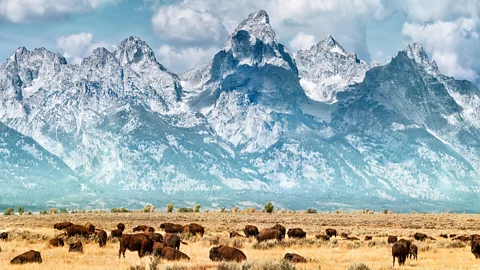 Getty Images
Getty ImagesThe US has never been known for its subtlety or for doing things on a small scale, and when it comes to its tourism offerings, this formula has proven to be a strength. “When the USA latches onto a trend, it doesn’t stop until it’s saturated. Witness wine, craft beer and coffee, or museums, concerts, and activities for children in cities,” said Leffel. “We don’t stop until we’ve passed everyone else in quality or variety.”
Related
Canada says too little, too late as Trump flip-flops on…
Nadine Yousif and Ali Abbas AhmadiBBC News, TorontoWatch: Canadian liquor store clears out US alcohol in response to tariffsNot long after the US imposed their
Vietnam, Thailand, and Philippines Among Top Asian Destinations Most-Searched by…
Home » Philippines Travel News » Vietnam, Thailand, and Philippines Among Top Asian Destinations Most-Searched by American Travelers, Driven by Surge in Viet
Trump tariffs tarnish ties: Americans anxious about travel to Canada…
Will Trump's tariffs on Canadian goods entering the U.S. affect tourism at home, tarnishing ties Canadians and Americans have shared for decades? It's a fair qu
Looming Trump travel ban strikes fear in Afghans who worked…
Expectations that President Donald Trump will soon bar Afghans and Pakistanis from entering the United States has set off panic among Afghans who were promised












